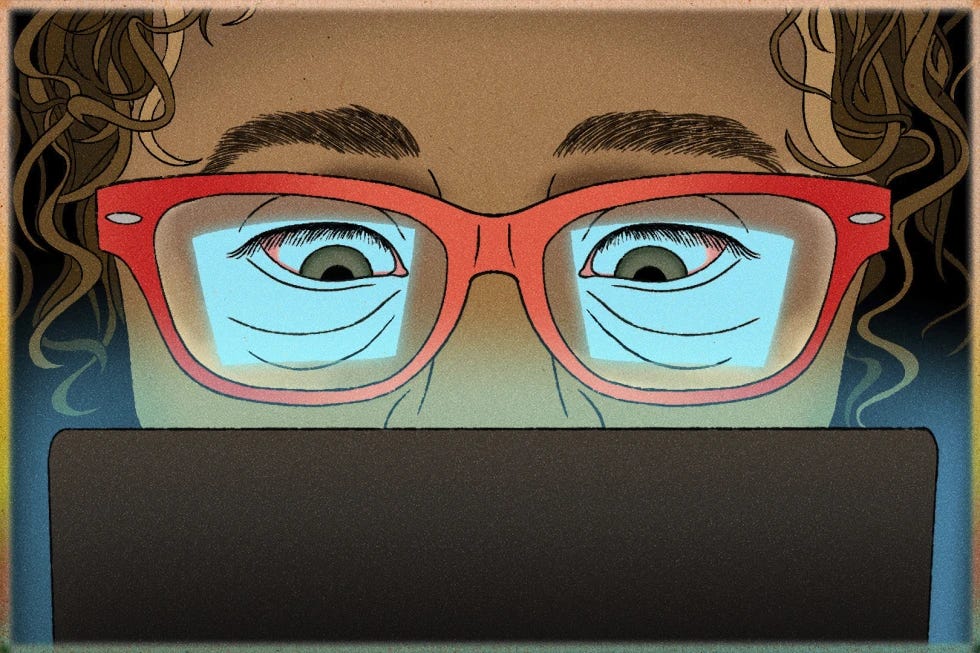Title: Simple Adjustments Can Alleviate Work-Related Eye Strain
"Simple Strategies to Reduce Eye Strain: The Power of Screen Breaks and an Optimized Desk Setup"
NEW YORK (AP) — By mid-afternoon each day, Cathy Higgins found herself struggling to see clearly after hours of staring at multiple computer screens. As a university research administrator, her job required meticulous attention to numbers and fine details in contracts, applications, and budgets.
“My vision would blur to the point where I couldn’t make out what was on the screen, and I’d squint so much that it became impossible to work,” Higgins shared.
To cope, she began taking breaks by engaging with colleagues in person and scheduling meetings for the afternoon. However, the workload didn’t decrease, forcing her to resume screen-heavy tasks late at night after her children went to bed.
“If I pushed through the blurriness, I’d end up with migraines,” she said.
The Impact of Prolonged Screen Exposure
Digital screens have become an unavoidable part of modern life, both in the workplace and at home. According to the American Optometric Association, approximately 104 million working-age Americans spend over seven hours daily looking at screens. The effects can be taxing, leading to dry or watery eyes, headaches, and even short-term vertigo. Prolonged screen use is also linked to an increase in myopia, particularly in children.
The Science Behind Eye Strain
One of the primary causes of discomfort is the prolonged tightening of the eye’s focusing muscles.
“That muscle isn’t meant to remain engaged all day,” explained Steven Reed, president of the American Optometric Association. “It’s like holding a light weight over your head—at first, it seems easy, but over time, fatigue sets in.”
While blue light from screens does not cause permanent damage, according to the American Academy of Ophthalmology, excessive screen time can still disrupt daily activities, work productivity, and quality time with family. Reed recommends regular eye exams and structured breaks to alleviate symptoms.
For Higgins, prolonged strain cut into quality time with her daughters. “They’d be playing, and I couldn’t engage the way I wanted to,” she said.
Reducing Eye Strain: Expert Recommendations
Follow the 20-20-20 Rule
A simple but effective way to ease eye strain is the 20-20-20 rule: every 20 minutes, take a 20-second break and focus on something at least 20 feet away. This brief pause relaxes the eye muscles and reduces fatigue.
“Eye strain is temporary,” noted Raj Maturi, an ophthalmologist at the Midwest Eye Institute and spokesperson for the American Academy of Ophthalmology. “Frequent breaks and lubricating eye drops can help.”
Blinking also plays a crucial role. The average person blinks 18-22 times per minute, but screen use can reduce this to just 3-7 times per minute. Using artificial tears can counteract dryness caused by decreased blinking.
Optimize Your Workspace
A larger monitor, increased font sizes, and proper screen positioning can help reduce strain. Higgins made adjustments when she transitioned to a remote job at Stand Up to Cancer, setting up a 29-inch monitor at home and positioning it three feet away—an extra foot beyond the standard office setup.
These changes significantly improved her comfort. “I still experience occasional blurriness, but it’s not as frequent,” she said. “It’s mainly on long, 12-hour days.”
Experts also recommend positioning screens at arm’s length and slightly below eye level to prevent discomfort.
Be Cautious of Marketing Claims
Some products, like blue light-blocking glasses, claim to reduce eye strain, improve sleep, and prevent eye damage. However, the American Academy of Ophthalmology states that scientific studies do not support these claims. Instead, they emphasize that digital eye strain stems from how we use screens rather than blue light exposure.
Managing Screen Time Beyond Work
After work hours, many people transition to scrolling through smartphones or watching videos on tablets, further prolonging screen exposure. Children, in particular, spend extended periods on digital devices, both at school and home.
Excessive screen time can accelerate myopia, especially in young users. Ayesha Malik, a pediatric optometrist at Children’s Hospital of Philadelphia, advises following the 20-20-20-2 rule, adding an extra “2” to encourage children to spend two hours outside daily for healthy eye development.
“Tracking screen time is challenging, but aiming for no more than 20 minutes per session helps,” Malik advised.
The Role of Screens in Sleep Disruptions
Blue light from screens can increase alertness, making it harder to unwind at night. Doctors recommend turning off screens 1-2 hours before bed and enabling “dark mode” in the evening. For those who enjoy entertainment before sleep, audiobooks or podcasts may be a better alternative.
With conscious adjustments and proactive habits, managing screen-related eye strain is possible, leading to better vision, productivity, and overall well-being.


